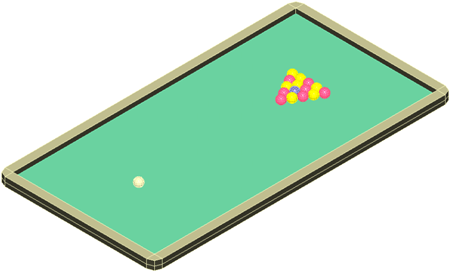Example 9 - Billiards (pool) |

|

|

|

|
|
Example 9 - Billiards (pool) |

|

|

|

|

The impact and rebound between balls on a small billiard table is studied. This example deals with the problem of defining interfaces and transmitting momentum between the balls. The study is divided into three parts:
At first, a general study is used to see the results of a cue ball when coming into contact with the 15 other balls arranged in a triangle. The balls are meshed for the purpose using 16-node shell elements (for the curvature) and a type 16 interface between each ball as well as between the balls and the table. The results show that the momentum is not homogenously transmitted: the balls on the table are not being evenly spread out.
Secondly, the collision between two balls is studied. All parameters are the same as in the first part. The reaction of those two balls is then compared to the analytical results.
Finally, six different interfaces are compared: types 16 and 17 tied or sliding interfaces using the Lagrange Multipliers method and a type 7 tied or sliding interface using the Lagrange Multipliers or the Penalty method. The study is also initiated using a quasi-static gravity application prior to dynamic behavior. When comparing the kinetic energy transmission, the results show that interfaces without the tied option provide better results than the others, and that the type 16 interface seems to be the best.